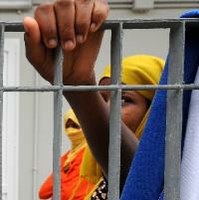(BRUSSELS) – The EU Council adopted a landmark reform of the EU’s asylum and migration rules Tuesday to manage arrivals in an orderly way, create uniform procedures and ensure fair burden sharing between EU states.
10 legislative acts adopted by the Council include:
A screening regulation to allow national authorities to refer irregular migrants and asylum applicants at an external border to the relevant procedure and make sure identification, security and vulnerability checks and health evaluation are carried out in a uniform way.
An updated Eurodac database will allow more accurate and complete data (also biometric data) on various categories of migrants, including applicants for international protection and people arriving irregularly in the EU.
An asylum procedure regulation streamlines the European asylum procedure and introduces a mandatory border procedure in well-defined cases. The return border procedure regulation deals with the returns of people whose application in this border procedure is rejected. The asylum and migration management regulation determines which member state is responsible for the examination of applications for international protection and for the first time introduces a fair sharing of responsibility among the member states.
The qualification regulation and reception conditions directive lay down uniform rules for the criteria for granting international protection and the standards for the reception of asylum seekers, helping to reduce secondary movements between member states.
The resettlement regulation deals with legal and safe pathways to the EU by establishing common rules for resettlement and humanitarian admission.
The mandatory border procedure will apply to certain categories of asylum seekersand aims to make a quick assessment at the EU’s external borders of whether applications are unfounded or inadmissible. People in the asylum border procedure are not authorised to enter the territory of the EU.
The new rules clarify which member state will be responsible for an asylum application (for instance in cases where a person has a family member in an EU country or when the asylum request is not made in the country where the asylum seeker first arrives in the EU).
The introduction of a solidarity mechanism combines mandatory solidarity to support member states dealing with a strong influx of migrants with flexibility as regards the type of contributions. Member states’ contributions can consist of relocations, financial contributions or, where agreed with the benefiting member state, alternative solidarity measures (e.g. providing border guards or helping with the deployment of reception centres).
In situations of crisis (mass arrivals and instrumentalisation), member states can derogate from certain rules and request enhanced solidarity from other EU countries. Possible derogations apply for instance to deadlines for registering asylum applicants and the duration of the border procedure.
Member states now have two years to put the laws that were adopted today into practice. The Commission is to present a common implementation plan to provide assistance to member states in this process.
EU migration and asylum policy
EU asylum rules (background information)
Eurodac regulation, 26 April 2024
Asylum procedure regulation, 26 April 2024
Regulation establishing a return border procedure, 26 April 2024
Regulation addressing situations of crisis and force majeure, 26 April 2024


